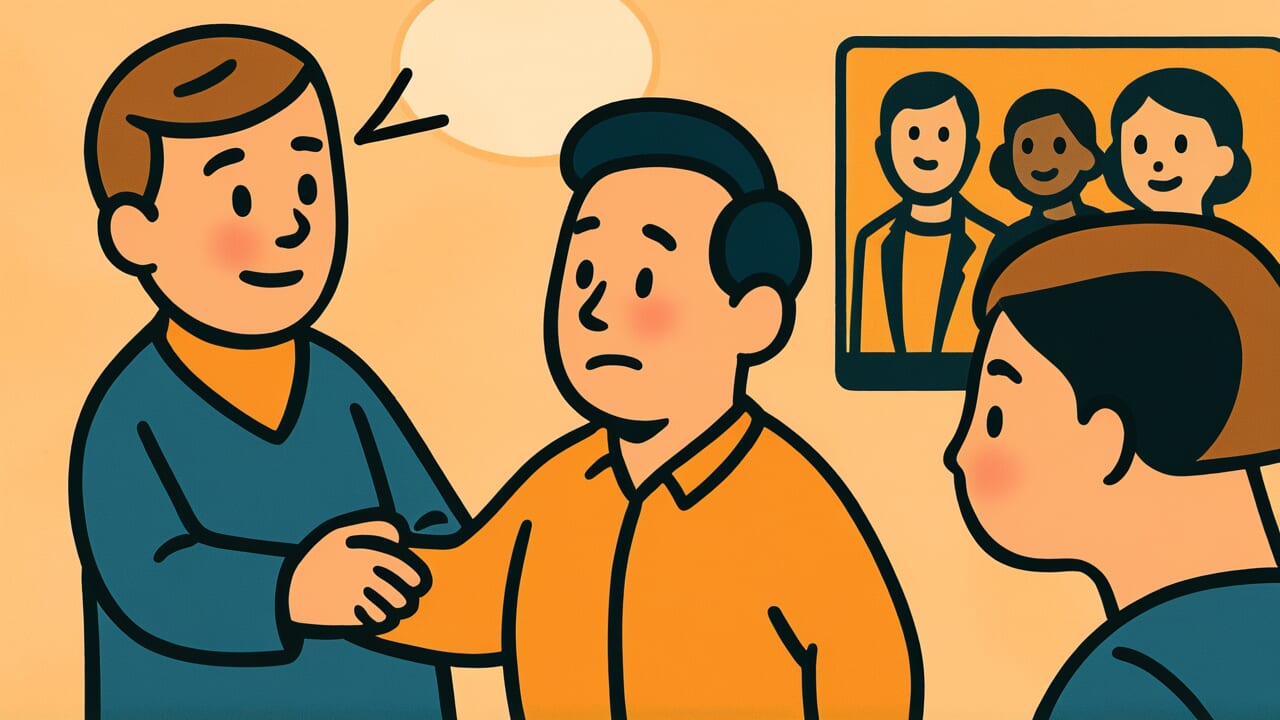How to Read “If you don’t know the child, look at their friends”
Sono ko wo shirazareba sono tomo wo miyo
Meaning of “If you don’t know the child, look at their friends”
This proverb means that if you want to understand someone’s character and personality, look at what kind of friends they spend time with.
People naturally become close to others who share similar values and personalities. At the same time, close friends greatly influence each other and become more alike over time.
This saying is often used in situations like job interviews or marriage arrangements, where understanding someone’s true nature is important.
Resumes and surface-level conversations don’t reveal everything about a person. Their friendships provide important clues to their real character.
The proverb expresses a law of human relationships: honest people gather honest friends, and careless people gather careless friends.
Even today, this perspective remains a useful guideline when judging the character of someone you’ve just met.
Origin and Etymology
This proverb is believed to come from ancient Chinese classics. The phrase “If you don’t know the child, look at their friends” appears in the Confucian text “Book of Rites.”
This teaching was later transmitted to Japan.
Confucianism placed great importance on human relationships, especially friendships. Confucius left many teachings about choosing friends wisely.
Ancient Chinese philosophy held that people are shaped by their environment. Close friends especially have a powerful influence on us.
The word “child” in the original phrase means “person.” In classical language, this character was used as an honorific term for people in general.
“Look” means more than just seeing with your eyes. It carries the deeper meaning of observing and understanding.
This saying spread throughout Japan during the samurai era and through education in temple schools. Similar expressions appear in moral instruction books from the Edo period.
Judging character through friendships was valued as an important standard. This way of thinking fit well with Japanese culture’s emphasis on groups, so it has been passed down through generations.
Usage Examples
- I couldn’t understand his character at first, but following “If you don’t know the child, look at their friends,” I talked with his friends and everything made sense
- In job interviews, not just the candidate matters—”If you don’t know the child, look at their friends” means what kind of people they’ve spent time with is also important information
Universal Wisdom
The universal truth this proverb reveals is that humans are never isolated beings. We are constantly shaped by our relationships with others.
We tend to think of ourselves as independent individuals. But in reality, we unconsciously absorb the values, habits, and ways of thinking of those close to us.
Why can we understand someone by looking at their friends? Because people instinctively seek “comfortable places.”
When we’re around people who share our wavelength and values, we feel safe and open our hearts. On the other hand, building deep, lasting relationships with people whose values differ greatly from ours is difficult.
There’s an even deeper truth here. People tend to choose friends who resemble their “ideal self.”
Those who want to be honest seek honest friends. Those with ambition seek ambitious friends. In other words, a person’s friendships mirror their inner values and aspirations.
Ancient people understood this human nature with sharp insight. While words and attitudes can be faked, friendships built over years cannot lie.
That’s why this proverb has been passed down through the ages as wisdom for understanding people’s true character.
When AI Hears This
Network theory represents human relationships as points and lines. You are the center point, and your friends are the surrounding points.
What’s interesting is that by examining the “observable points” (friends), we can reverse-engineer the properties of the “hard-to-observe center point” (you).
Let me explain concretely. In social media analysis, research shows that looking at five of someone’s friends can predict that person’s interests and values with about 70 percent accuracy.
Why is this possible? Because of a principle called “homophily.” This means people with similar attributes tend to connect with each other.
Data shows that people with common traits like age, education, hobbies, or ways of thinking are five to ten times more likely to become friends.
What’s more important is the “reverse inference” this proverb suggests. Usually we think “we become friends because we’re similar.”
But this proverb proposes the reverse direction: “look at the friends to understand the person.” This is the same concept as modern recommendation systems.
When Amazon suggests “customers who bought this item also bought,” that’s exactly an application of the technology that estimates the central person from their friend network.
In other words, this proverb articulated an extremely efficient information-gathering method over 2,000 years ago. It’s about statistically inferring the whole picture from limited information.
Lessons for Today
This proverb teaches modern people that if you want to know yourself, first look carefully at the people around you.
The people you spend time with daily reflect your own values and life direction. If you’re not satisfied with who you are now, reconsidering your friendships might be the first step toward change.
At the same time, this proverb teaches humility when understanding others. Don’t judge people based only on first impressions.
By learning what kind of people they’ve built trust with, you can achieve deeper and more accurate understanding. This perspective remains effective today in hiring and building relationships.
Most importantly, the friends you choose determine what kind of person you become. Surrounded by ambitious friends, you’ll grow too.
With positive friends, you’ll become more positive yourself. Choosing friends is actually choosing your future.
Do you have people around you who help you grow? This question is the greatest message this proverb offers to the modern world.



Comments